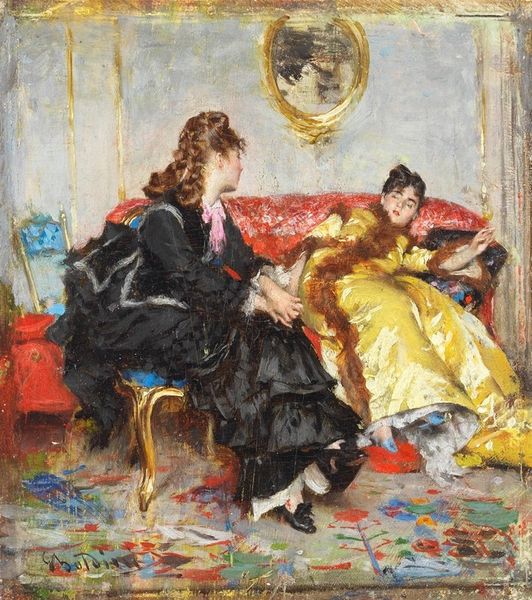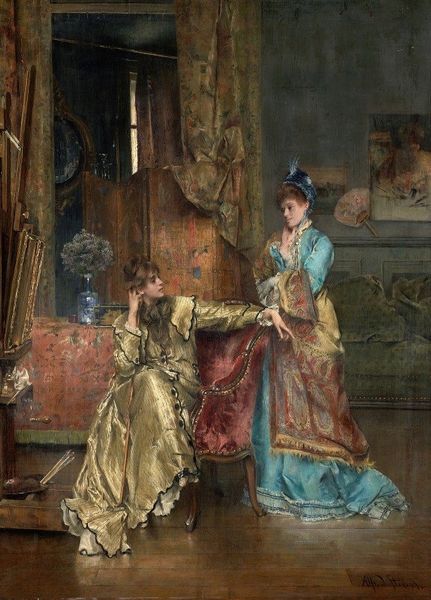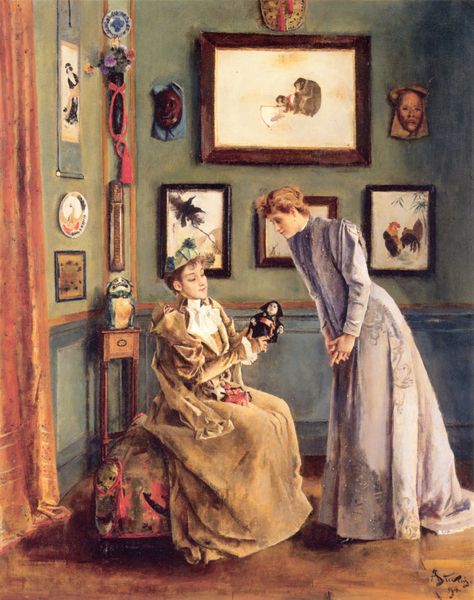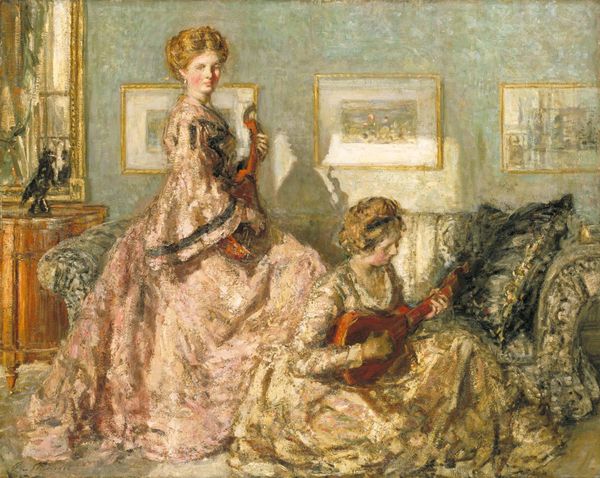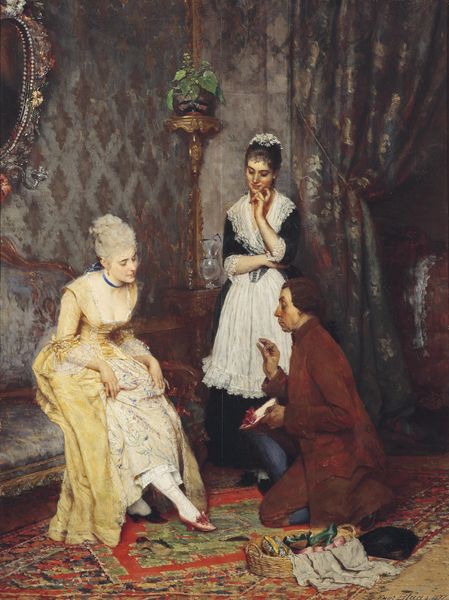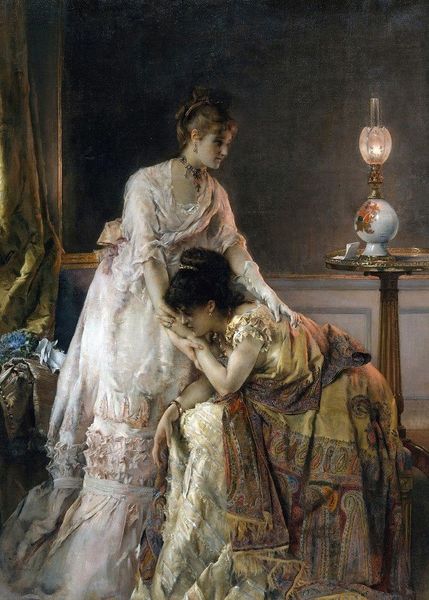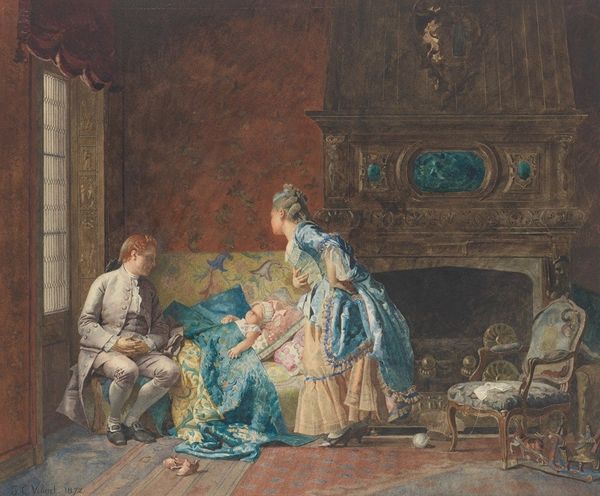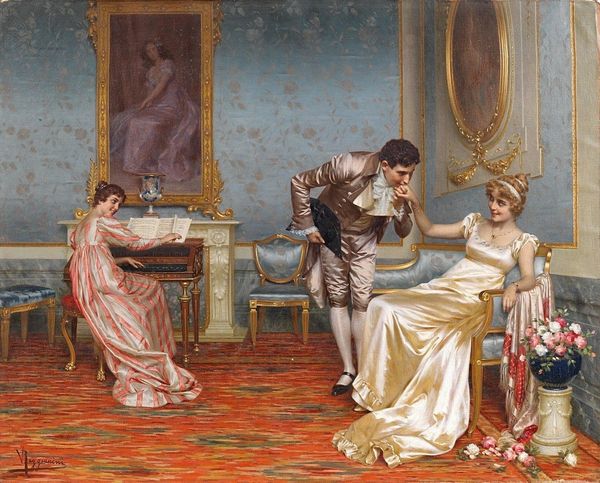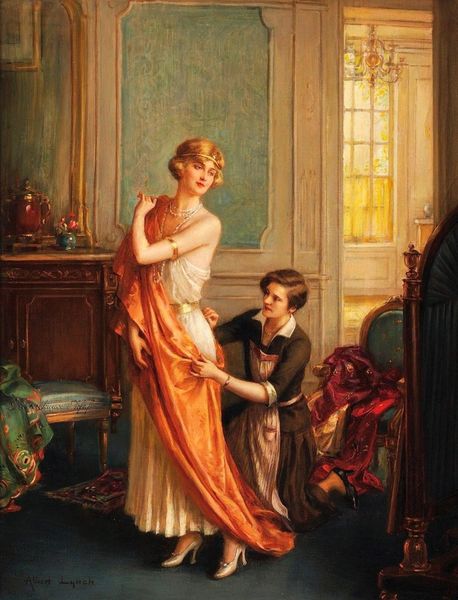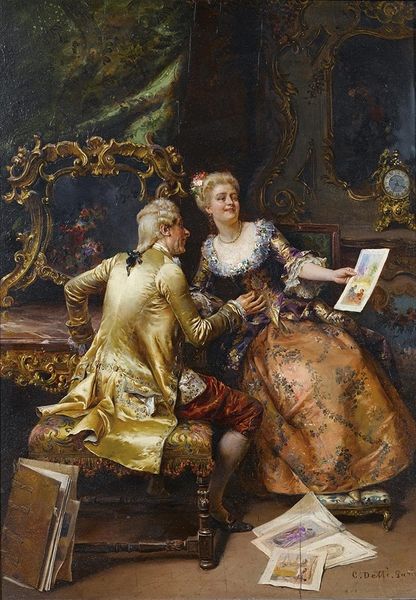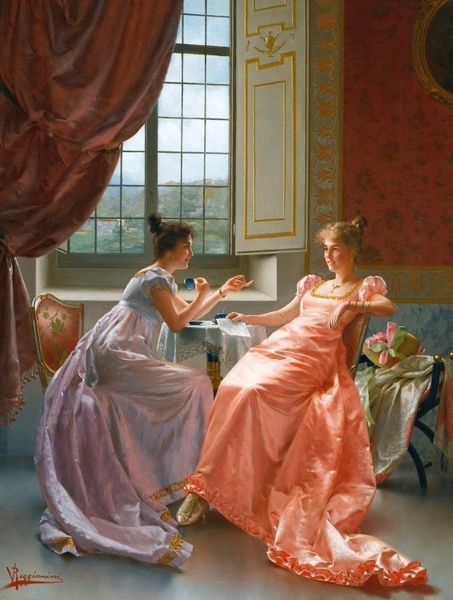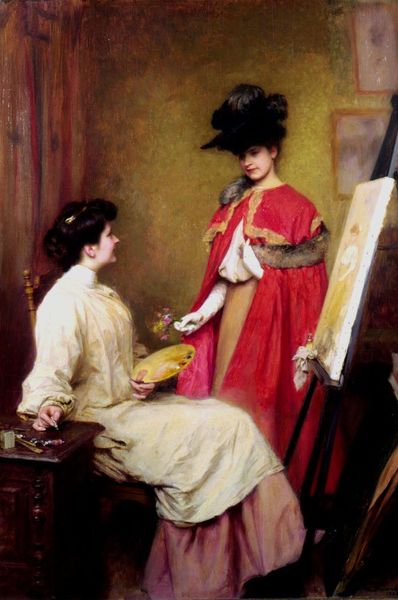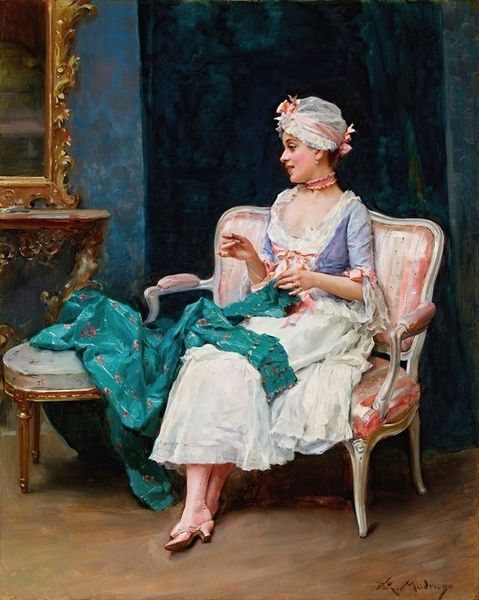
Copyright: Public Domain: Artvee
Curator: What strikes me immediately about Raimundo de Madrazo’s “Confidences,” circa 1870, is the rich, tactile quality of the fabrics depicted. Editor: It does seem a very intimate scene. The space feels charged with a certain quiet, but perhaps a pregnant anticipation. A secret being shared. Curator: It’s a wonderfully constructed moment, isn’t it? De Madrazo, trained in the Realist tradition, clearly revels in the details: the fall of the woman's white dress, the texture of the carpet, and the sheen of the other woman’s fashionable overcoat are all meticulously rendered in oil paint. But how might these choices communicate broader meaning? Editor: Well, I am struck by the implied wealth here. We see that not just in the clothing, but also the gilded mirror, and the other objects carefully arranged. It all creates a very specific sense of upper-class leisure and, dare I say, boredom, where perhaps intimate secrets become a form of entertainment. The public exhibition of this image in galleries also solidified the role of art within high society, further enhancing cultural perceptions of femininity. Curator: Interesting, especially when considering the craftsmanship involved. We have the fine fabrics meticulously woven and sewn, all those handcrafted embellishments—these goods were often produced under exploitative labor conditions, contrasting sharply with the serene setting. It begs the question of how such spaces, seemingly removed from everyday concerns, were built upon very tangible and unequal structures of production and consumption. Editor: That is certainly a lens to view it from. I am struck by the composition, and how it draws one's eye, starting with the preparations for stepping out and socializing. I see it reflecting the highly staged public image of women in society. Curator: Absolutely, the presentation of self is paramount. Perhaps through looking at what is depicted, the texture and making of the fabrics and other commodities depicted in "Confidences" can point toward other contexts. What's fascinating to me is to examine how the aesthetic pleasures provided here are, materially, made possible. Editor: It does allow one to ponder what we expect to see and experience within the context of a museum, especially paintings of this period. It underscores the inherent social frameworks that shape both production and exhibition of artworks. Curator: It’s through acknowledging those contexts that we can truly appreciate both the artistry and the complex networks it reflects. Editor: Precisely. By investigating these layers, we enrich our awareness of art’s ability to offer critical commentary while existing within society itself.
Comments
No comments
Be the first to comment and join the conversation on the ultimate creative platform.
